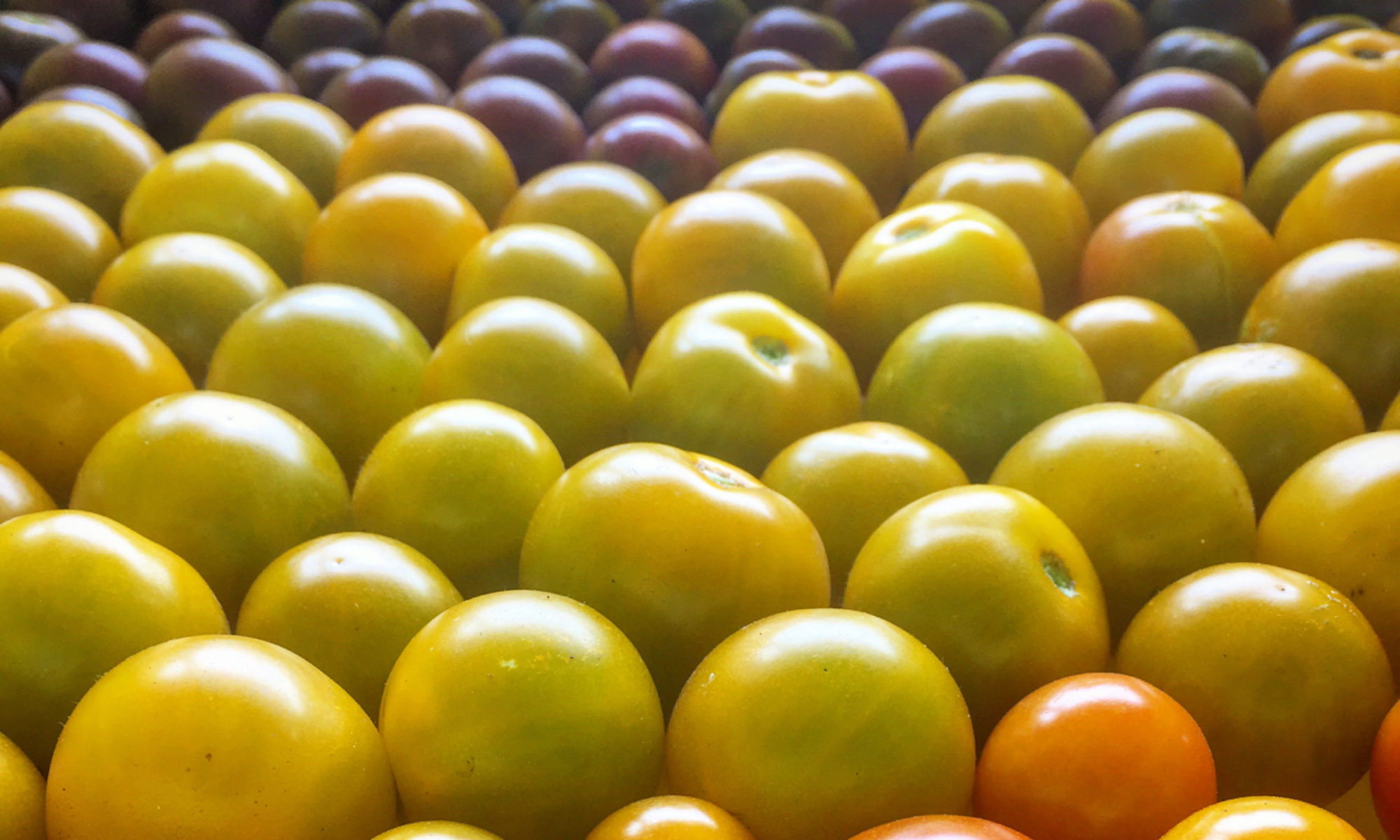
My good friend Katherine Deumling (cookwithwhatyouhave.com) just posted a short video about the French grocery chain, Intermarche, and their campaign to reduce food waste by promoting “inglorious fruits and vegetables.” This campaign follows the FAO initiative launched in 2011, SAVE FOOD: Global Initiative on Food Loss and Waste Reduction.
I am completely onboard with the FAO’s mission to reduce food waste. I think it’s fantastic that Intermarche is recognizing that fruits and vegetables should be a greater part of our diet and that people need better access to fresh fruits and vegetables. I also agree that size and visual appearance is not a good blanket indication of the quality of produce. When I started Slow Hand Farm in 2008 I intentionally put produce in my farm members’ shares that were “inglorious” but delicious. I put in anything that I would have eaten out of my own garden and reduced waste like so many other small farms do.
My late night, quick comment on Katherine’s post was, “Unfortunately this actually most likely means less $ to farmers.”
This deserves more explanation because I think the issue of food waste and food access goes much deeper than strict grading standards, and I worry about people oversimplifying and missing the bigger picture.
As a follow up to my comment Katherine posted two more articles, one from the New York Times and another from Grist, which both seem to imply that approaches like Intermarche’s have worked in other places to the benefit of all, including farmers. Certainly in some cases farmers have, and will benefit from this approach, but for farmers as a whole I think this makes things worse. Even though selling more produce (even at a lower price) definitely adds gross revenue to the farm’s income statement, it can actually reduce the bottom line, cutting into profits by adding significant expenses.
Let me explain that last point because I don’t think it is an obvious one, especially to non-farmers. As a farmer, I frequently leave produce in the field, not because some part of it is not edible, but because it is more work (read cost) to harvest, sort, wash and pack the produce than the return (read income) that I can receive from selling it. Most times it actually takes longer to sort, wash and pack substandard produce meaning the cost of production is actually higher, not lower, than quality produce. This produce is left in the field or is composted on the farm and provides fertility for future crops. I do not consider it waste, it is home grown fertilizer.
To be clear, this is not the vast majority of the produce being discussed in the above articles. The vast majority of the food waste discussed above is already harvested, and probably washed (I use the term washing loosely here), but is discarded either at the sorting stage (also called grading) before it is packed and shipped, or because once it has been packed and stored and shipped and stored again, it no longer meets the grade. Standard grades (usually based on size, color and shape) are set not so much because they ensure any kind of eating quality, but because they let far away buyers know, with a kind of short hand, what they are buying. If you’re a produce buyer buying cases of lettuce, you want to know that when you’re comparing two cases of romaine lettuce from two different suppliers, who in turn have bought those cases from different brokers, or maybe even farmers somewhere far away, that they both have the same number of heads, the same basic size of heads, they same basic color. You don’t want to pick the one that is $23 over the one that is $24, and then after buying 50 cases realize that what you’re getting is some tiny, mis-shapen, off color variety of romaine packed only 20 to a case that you can’t sell. You want to know that a case of romaine is a case of romaine, your typical loaf shaped green thing with a tender heart and 24 heads to a case. The standards are there to make life easier for distant buyers, not to improve the quality of our food.
Food that is rejected after the expense of harvesting, washing, sorting and being shipped from the farm is waste. It’s wasted energy (which can’t be recovered) and it’s wasted nutrients (which can be recovered by composting but usually aren’t). For the farmer that sells produce this way, and especially for the middlemen who distribute produce this way, being able to sell rejects as “inglorious fruits and vegetables” definitely increases the bottom line, at least in the short term.
But here I see a second problem in this nearsighted solution: the basic economic concept of supply and demand. To review for a moment, as supply increases, demand, and the corresponding price, decreases. There are only so many fruits and vegetables that the world’s population can eat, therefore demand is increasing slowly. It increases as we improve our diets (eat more fruits and vegetables), and increase our global population, but there are still limits. If we actually had a shortage of fruits and vegetables worldwide and adding “inglorious fruits and vegetables” into the supply didn’t make up for the full shortage then demand probably would stay high and prices to the farmers would would be good. Intead we have an abundance of fruits and vegetables and an inefficient distribution system, so by increasing the inefficiency by reducing the waste, prices will only be driven down. Increased supply without a corresponding increase in demand leads to lower prices. Lower prices are not good for farmers as a whole.
If having big grocery chains accept sub-standard vegetables to reduce food waste, increase food access for the poor, and generate more income for farmers isn’t the answer then what is?
Shifting more of our food dollars to local farms by buying directly, or encouraging the grocers we buy from to do the same would make a much bigger difference. Shorter supply chains reduce waste in shipping and storage, and any “waste” that stays on the farm can actually contribute to the farms fertility in the future.
Reducing income and wealth disparity and therefore increasing the purchasing power of the poorest segment of our population would go a long way toward improving food access.
Increasing food prices could help in several ways. Many of the worlds poorest are the food producers and so when we talk about getting food to the poor, increasing farm income, while at the same time reducing income and wealth disparity, would disproportionately improve conditions for small farmers and farm laborers at the same time as it increases access to food for all poor people.
Increasing prices would also encourage less waste by the end users of food. As food prices have dropped in the US food waste increased by 50% between 1970 and 2010 (http://visualizing.org/visualizations/21-shocking-us-food-waste-facts-statistics).
Intermarche’s marketing campaign for ugly produce is a good one. We all need to understand that visual appearance is not a stand in for more important qualities of food like taste, nutrition and environmental impact. Their campain is limited though, and we need to think beyond just the easy (and false) path of spending less to get more. We also need to make larger changes to the system to address some of the root causes, not just the superficial symptoms.




